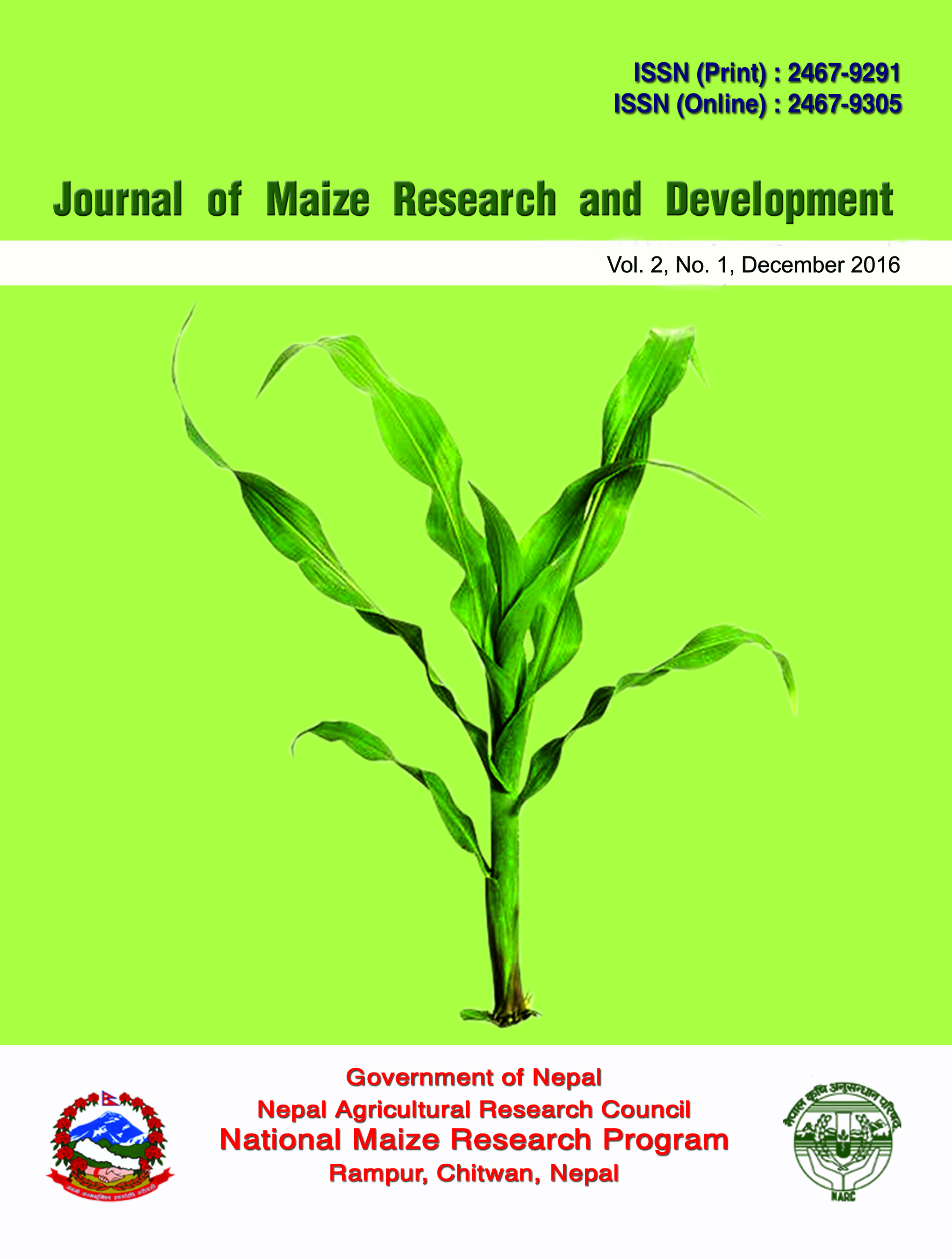Status of maize stalk rot complex in western belts of Nepal and its integrated management
DOI:
https://doi.org/10.3126/jmrd.v2i1.16213Keywords:
Disease management, Stalk rot, MaizeAbstract
Maize stalk rot complex is becoming a serious threat for maize growing areas of Nepal. A field monitoring for maize stalk rot complex was done during crop season (August, 2016) covering 10 farmers field each of Surkhet, Banke, Dang, Chitwan and Nawalparasi districts. Maize crop showed highly susceptible reaction to the disease at western belts of Dang and susceptible reaction was marked in Chitwan and Nawalparasi districts while the disease effect was mild at Banke and Surkhet district. Most of the plant diseases managed successfully through the application of bio-control agents, host resistance, chemicals and other different cultural control methods. The result of field experiment conducted at Dang showed that all the treatments had significant (P≤0.05) effect on percent disease index (PDI) and crop yield over farmers practice to control maize stalk rot. The higher percent disease control (52.36%) and yield increase (40.29%) were recorded from the plot sprayed with streptocyclin @ 2 g L-1 and insecticide (cypermethrin + chloropyrifos @ 2.5 ml L-1 of water during knee height and subsequent spray after 15 days interval as compared to farmers practice. Out of 30 genotypes, Rampur composit, Arun 2, Rampur 34, RamS03F08, TLBRS07F16 and Rampur 24 were found resistant against stalk rot complex with higher yield at Rampur Chitwan.Downloads
Download data is not yet available.
Abstract
1180
PDF
1363
Downloads
Published
2016-12-23
How to Cite
Subedi, S., Subedi, H., & Neupane, S. (2016). Status of maize stalk rot complex in western belts of Nepal and its integrated management. Journal of Maize Research and Development, 2(1), 30–42. https://doi.org/10.3126/jmrd.v2i1.16213
Issue
Section
Articles




